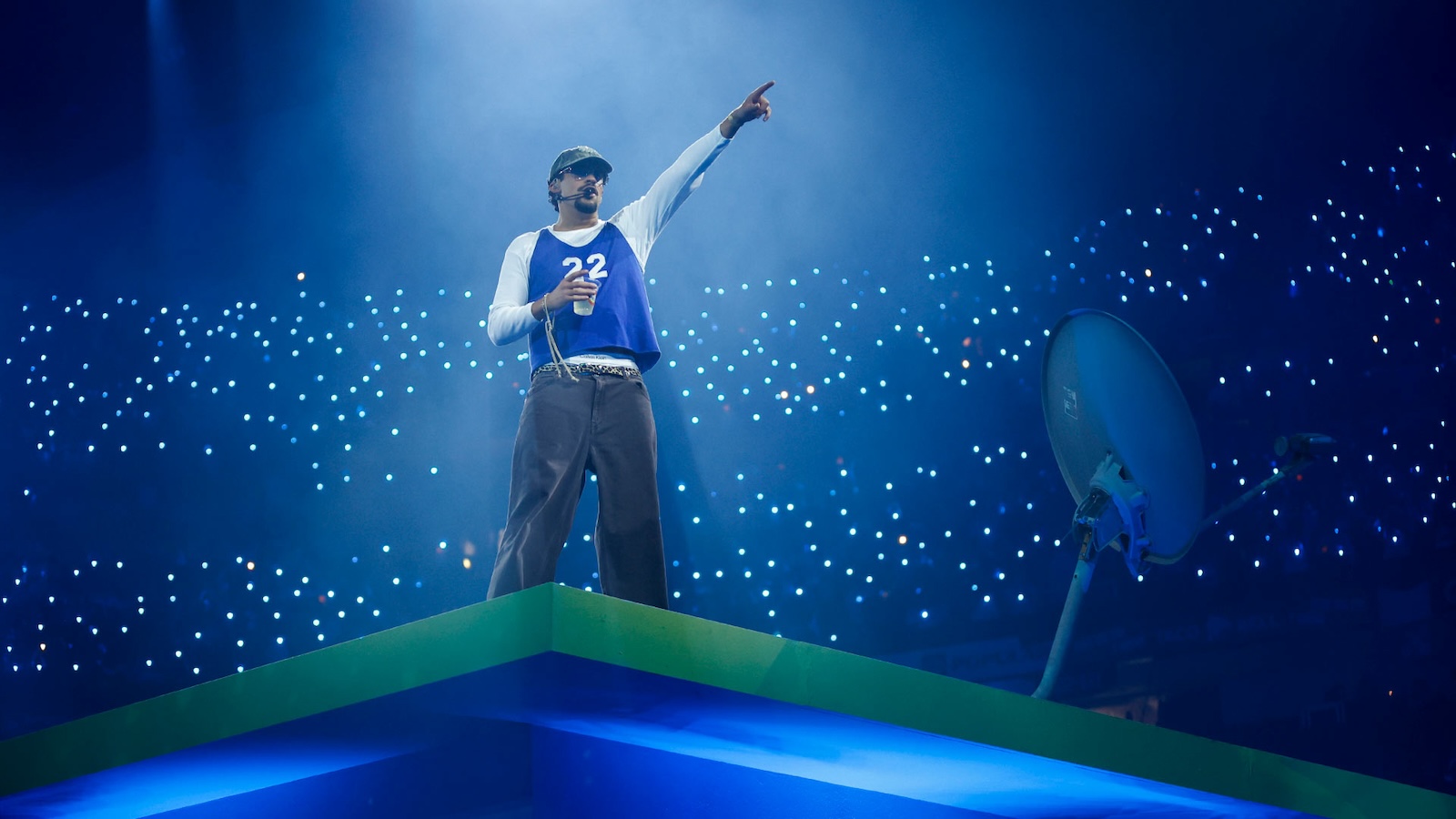Bad Bunny as Scholarly Subject?
October 06, 2025

UMD course explores Puerto Rico’s soundscape of protest and poetics.
By Jessica Weiss ’05
He’s the most popular rapper-singer in the world today and was just named Super Bowl LX’s halftime performer, but perhaps Bad Bunny’s résumé should also list him as a poet, historian and cultural critic.
Consider his 2022 music video “El Apagón” (“The Blackout”). Equal parts dance anthem and protest piece, it blurs the line between celebration and critique of conditions in his native Puerto Rico in a 22-minute documentary on gentrification, displacement and colonialism, set against the backdrop of widespread power blackouts on the island.
With nearly 16 million views, it exemplifies why scholars across the country are increasingly turning to Bad Bunny—whose real name is Benito Antonio Martínez Ocasio—as a subject of study, unpacking his tremendous cultural impact through the lenses of race, gender, politics, power and more.
At the University of Maryland, Professor Juan Carlos Quintero-Herencia, a writer and scholar of Caribbean and Latin American literature who is originally from Puerto Rico, teaches Bad Bunny as part of the new course “Contemporary Puerto Rican Musicality.” In it, students examine how music—and its performance, protest and poetry—both reflect and reshape the Puerto Rican experience, with a syllabus that stretches from 19th century writers like Salvador Brau to legendary lyricists like Tite Curet Alonso, and across genres like bomba, plena, salsa and reggaetón.
Quintero-Herencia places Bad Bunny in this broad historical and sonic context, inviting students to consider how songs act as cultural documents, how performance becomes political, and how the Puerto Rican soundscape continues to evolve.
He shared with Maryland Today why he believes the global superstar deserves a place in the college classroom.
Bad Bunny Is a Poet
“Bad Bunny is the most consequential, most important contemporary poet in Puerto Rico today,” Quintero-Herencia said. Students in his course read the musician’s lyrics closely, just as they would a poem or novel. By putting Bad Bunny in conversation with literary giants and political thinkers, Quintero-Herencia challenges students to reconsider who gets to shape culture and what kinds of texts are worthy of serious study. “Bad Bunny is doing what any poet should do: launch a proposition that is embraced, read, discussed, enjoyed,” he said.
He Brings Puerto Rico to the Global Stage
From gentrification and displacement to economic and environmental sustainability, Bad Bunny shines a light on some of Puerto Rico’s most urgent realities. “He makes constant references to Puerto Rican history,” Quintero-Herencia said. “And people around the world are learning about these issues—not from academia or politics, but because of Bad Bunny.”
He Sticks to Spanish
Bad Bunny has never “crossed over” to English to reach a broader audience—yet has sold over 110 million albums worldwide. Instead he uses Puerto Rican Spanish—rich with local slang (“jerga”), inventive rhythm and cultural nuance. For Quintero-Herencia, it’s a reminder that language itself carries cultural memory, identity and resistance. Bad Bunny doesn’t “neutralize” or simplify Puerto Rican Spanish for broader appeal—he doubles down on it.
He Turns Convention on its Head
In a genre long critiqued for its machismo, Bad Bunny flips the script. He paints his nails, wears skirts and embraces bold aesthetics that challenge traditional expectations. For Quintero-Herencia, these are acts of performance with cultural weight. “He’s the only reggaetonero to be so out there,” he said. That includes moments when Bad Bunny dresses as a jíbaro, the rural folk archetype of Puerto Rican identity. “That has meaning,” Quintero-Herencia said. “It’s not just fashion—it’s a whole cultural imaginary being invoked.”
He’s a Bridge to Broader Musical Traditions
Bad Bunny’s music draws from—and responds to—decades of Afro-Caribbean sonic traditions. So studying him is a way to engage with the long arc of Caribbean music, literature and history, Quintero-Herencia said. And just like genres before reggaetón, Bad Bunny’s music has sparked its share of cultural criticism, especially for its explicitness and perceived threat to traditional values. By situating Bad Bunny within a larger lineage, students come to see reggaetón not as a rupture, but as a continuation and evolution of Caribbean expression. “Students realize this is a deep conversation with the past,” he said.
Photo by Ramon "Tonito" Zayas / GFR Media - GDA via AP Images

